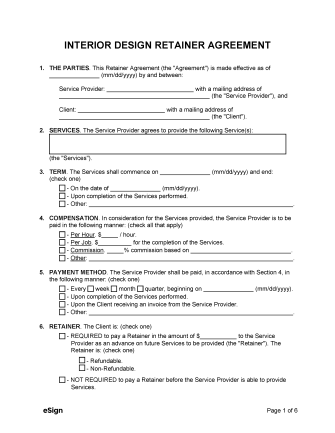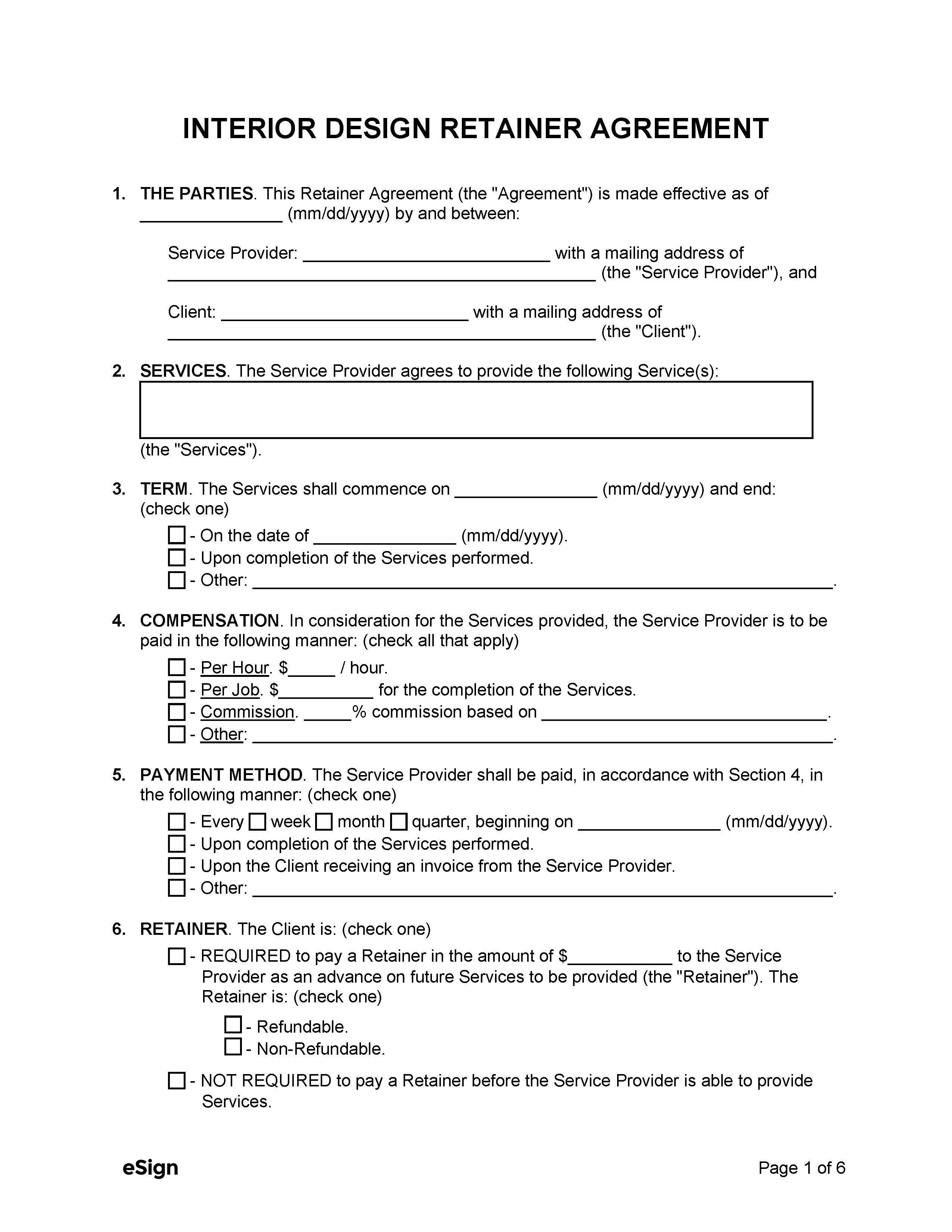When to Use a Retainer Agreement
Interior design retainer agreements are often signed at the end of an initial consultation to secure the client and move on to the next step of providing design services.
The retainer is typically non-refundable and calculated as a percentage of the total estimated cost for the project. Depending on the project, the designer may ask for a portion of the total fee or the entire cost upfront.
Why Use an Interior Design Retainer Agreement
A retainer agreement protects the interior designer’s business by paying them upfront for their services. This payment ensures that the designer won’t spend time on the project only to have the client pull out without compensating them.
A written agreement helps secure the client’s business, ensures the designer is being paid for their time, and allows them to make purchases from vendors if needed.
What’s Included
Interior design contracts should contain the following:
- The names of the designer and the client.
- The amount of the retainer.
- The services the interior designer will perform for the client.
- How much and the manner in which the designer will be paid.
- Which party is responsible for expenses.
- When the contract will begin and end.
- The interior designer’s status as an independent contractor.
Sample
Download: PDF, Word (.docx), OpenDocument
INTERIOR DESIGN RETAINER AGREEMENT
1. THE PARTIES. This Retainer Agreement (the “Agreement”) is made effective as of [MM/DD/YYYY] by and between:
Service Provider: [SERVICE PROVIDER NAME], with a mailing address of
[SERVICE PROVIDER ADDRESS] (the “Service Provider”), and
Client: [CLIENT NAME], with a mailing address of
[CLIENT ADDRESS] (the “Client”).
2. SERVICES. The Service Provider agrees to provide the following Service(s): [DESCRIBE SERVICE(S)]. (hereinafter the “Services”).
3. TERM. The Services shall commence on [MM/DD/YYYY] and end upon either party providing [#] days’ notice.
4. COMPENSATION. In consideration for the Services provided, the Service Provider is to be paid the following compensation: [DESCRIBE COMPENSATION].
5. PAYMENT METHOD. The Service Provider shall be paid, in accordance with section 4, within [#] days upon the Client receiving an invoice from the Service Provider.
6. RETAINER. The Client is required to pay a non-refundable retainer of $[AMOUNT].
7. INDEPENDENT CONTRACTOR STATUS. The Service Provider is an independent contractor, and neither the Service Provider’s employees nor contract personnel are or shall be deemed the Client’s employees.
8. INDEMNIFICATION. The Service Provider shall indemnify and hold the Client harmless from any loss or liability from performing the Services under this Agreement.
9. GOVERNING LAW. This Agreement shall be governed by the laws of the State of [STATE NAME].
IN WITNESS WHEREOF, the parties hereto have executed this Agreement on the dates written hereunder.
Service Provider’s Signature: ______________________ Date: [MM/DD/YYYY]
Print Name: [SERVICE PROVIDER NAME]
Client’s Signature: ______________________ Date: [MM/DD/YYYY]
Print Name [CLIENT NAME]

